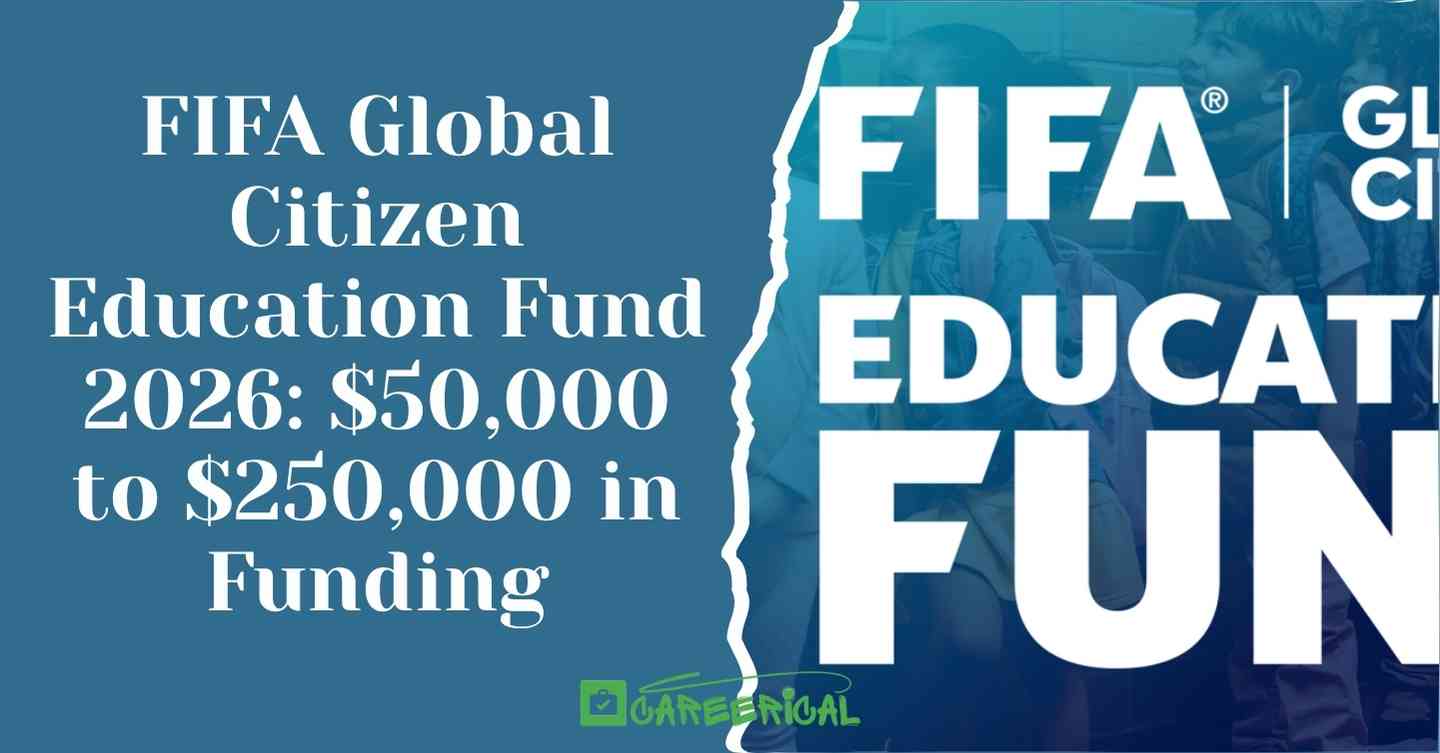FIFA Global Citizen Education Fund 2025/2026: $50,000 to $250,000 in Funding
The FIFA Global Citizen Education Fund backs grassroots groups that use sport and community action to expand quality education for children in underserved areas. It’s a practical way to scale local solutions that blend learning with play, culture, and community engagement.
This Fund is a partnership between FIFA and Global Citizen, mobilizing money, partnerships, and visibility to amplify projects that produce measurable learning gains and stronger school participation. If your organization already blends education and sport, this grant could be a game changer.
Why the Fund Matters
Many communities still face barriers that keep children out of school: weak infrastructure, household poverty, exclusion, and a lack of extracurricular support. The Fund targets those gaps by investing in local organizations that have proven results and the capacity to grow.
For small NGOs, community groups, and social enterprises, the Fund doesn’t just offer cash. It creates pathways to technical support, networks, and visibility that help programs become sustainable and more impactful.
Who Can Apply
Typical eligibility expectations include:
- Registered non-profit status in the country where funds will be used.
- Programs serving roughly 500–10,000 community members.
- A grant request that does not exceed 50% of the organization’s annual budget for the proposed year.
- At least three years of audited financial statements or certified financial records.
- Direct program involvement in improving access to education or enhancing education quality through sport or community activities.
These requirements ensure funded projects are stable, accountable, and locally rooted.
How Projects Are Evaluated
Reviewers look for proposals that clearly move the needle on education. Key assessment areas include:
- Reducing financial barriers that stop children from enrolling or staying in school.
- Strengthening educational infrastructure or safe learning spaces.
- Demonstrating inclusive practices that prioritize girls, learners with disabilities, and marginalized groups.
- Having robust child safeguarding systems in place.
- Presenting measurable outcomes with baseline data and realistic targets.
Funders prefer propositions that show both proven results and a credible plan to scale.
Recommended posts:
Fully Funded to Switzerland: FIFA Master Scholarships and Financial Aid (CHF 45,000)
Fast-Track to High-Demand Jobs in Canada 2025: Diploma Programs in Canada
What the Fund Provides
Award sizes generally range from $50,000 up to $250,000, depending on project scope and evidence of impact. Typical support includes:
- Direct program funding for teacher training, learning materials, sports equipment, and community mobilization.
- Capacity building in monitoring and evaluation, financial management, and communications.
- Increased visibility through partner networks, which can unlock additional donors or government buy-in.
Funds are intended to be catalytic: they should make programs more effective and help them attract sustained support beyond the grant period.
Practical Tips for a Strong Application
- Start early and gather audited financial statements before you begin. Missing documents are a common reason for disqualification.
- Write a tight theory of change: show exactly how activities lead to learning outcomes.
- Use specific, measurable indicators (for example, “raise Grade 3 literacy scores by 15% in 18 months”).
- Include letters of support from schools, local education authorities, or community leaders.
- Build a realistic budget that clearly links costs to outcomes and keeps overhead reasonable.
- Outline a monitoring plan with baseline metrics, collection methods, and reporting timelines.
- Explain how the project will continue after the grant ends—government adoption, diversified funding, or community contributions strengthen your case.
Common Pitfalls to Avoid
- Proposing ambitious scale-ups with no evidence of prior success.
- Submitting vague goals without measurable indicators.
- Neglecting child safeguarding policies or failing to show basic financial controls.
- Overlooking community ownership and local partnerships.
Addressing these issues up front increases the chance your proposal will pass technical review and score well in competitive panels.
After the Award: What to Expect
Grantees should plan for regular narrative and financial reporting, occasional site visits, and publicity requests. Successful applicants also often gain access to peer networks, technical assistance, and opportunities to connect with national stakeholders or co-funders.
Final Thought
This Fund favors practical, evidence-based projects that put local leadership at the center. If your organization can show measurable education outcomes, clear financial stewardship, and a credible path to scale, this grant can accelerate your impact and connect you to a global audience. Prepare carefully, focus on measurable change, and use the application process to clarify your project’s theory of change and sustainability plan.
More Opportunities:
- King’s College London’s Commonwealth Shared Scholarship Scheme (CSSS) 2026
- Get Paid $10,000 to Relocate to Australia: WA’s Construction Visa Subsidy Explained
- Seasonal Employment Opportunities in Norway for English-Speaking Foreigners
- Study Free in the U.S.: Morehead State’s 2026 Full-Tuition Scholarships Now Open
- Avoid Qatar Work Visa Denials in 2026: Essential Tips and Information Before You Apply


Post Comment